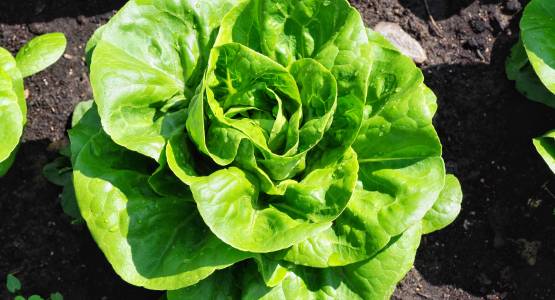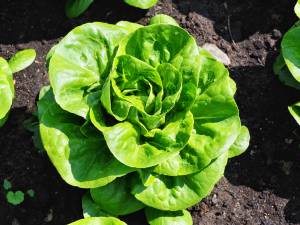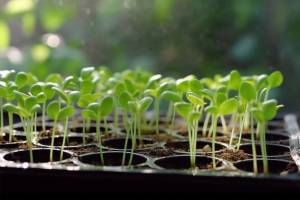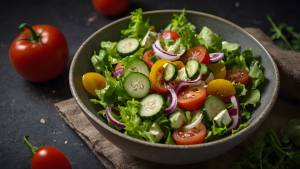What to grow in a greenhouse in March?

What to Grow in a Greenhouse in March: A Comprehensive Guide
March is a pivotal month for greenhouse gardening. As winter gradually transitions into spring, it’s the perfect time to plan and plant a diverse array of crops. Whether you’re a seasoned grower or a gardening novice, knowing what to grow in a greenhouse during March can set the tone for a productive growing season. Let’s explore the best crops to cultivate and key tips to maximize your success.
The Benefits of Using a Greenhouse in March
March brings unpredictable weather, with fluctuating temperatures and sporadic frosts. A greenhouse provides a controlled environment where you can shield tender plants from the cold, accelerate growth, and get a head start on the growing season. By leveraging the protective warmth of a greenhouse, you can:
- Extend the Growing Season: Start crops earlier and enjoy an extended harvest.
- Grow a Wider Variety of Plants: Cultivate crops that thrive in warmer conditions.
- Protect Plants from Pests and Diseases: Minimize exposure to harmful insects and pathogens.
Now that we understand the advantages, let’s delve into what you can grow.
Top Crops to Grow in a Greenhouse in March
1. Leafy Greens

Leafy greens are hardy, fast-growing, and thrive in the cooler temperatures of early spring. Some excellent options include:
- Lettuce: Varieties like butterhead, romaine, and loose-leaf lettuce grow quickly and can be harvested in stages.
- Spinach: A cold-tolerant crop, spinach germinates well in March and provides a nutrient-rich harvest.
- Kale: This versatile superfood thrives in cooler conditions and can be planted in pots or directly in the soil.
- Swiss Chard: Known for its vibrant stems, Swiss chard adds colour and nutrition to your greenhouse garden.
Tip: Use modular trays or small pots for sowing seeds. Thin seedlings once they sprout to ensure proper spacing and airflow.
2. Herbs
Fresh herbs are indispensable in the kitchen, and many varieties flourish in a greenhouse environment during March:
- Parsley: Sow parsley seeds in trays or pots and ensure consistent moisture.
- Coriander (Cilantro): Quick to germinate, coriander grows best with ample light and moderate watering.
- Chives: A hardy herb with mild onion flavour, chives are perfect for early spring planting.
- Mint: While it’s best grown in containers to prevent overgrowth, mint thrives in the protected conditions of a greenhouse.
- Basil: Though basil prefers slightly warmer temperatures, sowing it in March gives it a head start for summer harvests.
Tip: Position herbs where they receive plenty of light but avoid direct exposure to intense midday sun.
3. Root Vegetables
Root crops are excellent for greenhouse cultivation in March, especially if you prepare the soil properly. Consider planting:
- Carrots: Varieties like Nantes and Chantenay grow well in deep containers or raised beds.
- Radishes: These quick-maturing vegetables are perfect for successive sowing.
- Beets: Beets prefer cool conditions and are easy to grow with minimal maintenance.
- Turnips: Ideal for cooler months, turnips are versatile and can be harvested young or allowed to mature.
Tip: Ensure the soil is loose and well-draining to promote straight, healthy root growth.
4. Early-Season Vegetables

March is the ideal time to start early-season vegetables that can later be transplanted into outdoor beds:
- Peas: Sow sugar snap or snow peas in trays or directly in beds for a sweet and crunchy harvest.
- Onions: Plant onion sets or seeds for a reliable crop. Green onions (scallions) are especially quick to mature.
- Broad Beans: These hardy legumes are easy to grow and thrive in cooler temperatures.
- Cabbage: Early varieties of cabbage can be started in trays and later moved outdoors.
Tip: Support climbing vegetables like peas with trellises or stakes to optimize space.
5. Fruits
While March isn’t peak fruit-growing season, certain fruits can be started in the greenhouse to produce an early or prolonged harvest:
- Strawberries: Plant everbearing or June-bearing varieties in pots or hanging baskets.
- Tomatoes: Start tomato seeds in trays to transplant later. Varieties like cherry and Roma are great choices.
- Melons: Though melons need warmth, sowing seeds in March ensures robust seedlings for summer growth.
Tip: Monitor humidity levels to prevent mould or mildew, especially for strawberries and tomatoes.
6. Flowers
Greenhouses aren’t just for edibles! March is also an excellent time to sow flowering plants, which can later brighten your garden:
- Marigolds: Easy to grow and pest-repellent, marigolds add vibrant colour to your garden.
- Petunias: Start petunia seeds in trays for summer blooms.
- Sweet Peas: These fragrant flowers thrive in cooler temperatures and can be sown directly in the soil.
- Calendula: Hardy and cheerful, calendula flowers are perfect for early planting.
Tip: Use seed trays with a clear plastic cover to create a mini-propagation station for flowers.
Essential Greenhouse Tips for March
- Monitor Temperature and Ventilation March temperatures can fluctuate significantly. Use a thermometer to track daytime and night-time temperatures. Ventilate the greenhouse during warmer days to prevent overheating and maintain airflow.
- Use Grow Lights if Needed Natural daylight may still be limited in early March. Supplement with grow lights to ensure plants receive adequate light for photosynthesis.
- Water Wisely Avoid overwatering, as damp conditions can lead to root rot or fungal diseases. Water in the morning to allow excess moisture to evaporate by evening.
- Fertilize Sparingly Young seedlings require minimal feeding. Use a diluted, balanced fertilizer once they establish roots, and follow the manufacturer’s guidelines.
- Control Pests and Diseases Inspect plants regularly for signs of pests like aphids or whiteflies. Use organic methods like neem oil or introduce beneficial insects to keep infestations at bay.
Benefits of Starting Early
Growing in a greenhouse during March offers numerous advantages. You can:
- Enjoy earlier harvests of your favourite crops.
- Experiment with different varieties that may not thrive outdoors.
- Protect your plants from late frosts and sudden temperature drops.
Additionally, starting plants early gives you the opportunity to stagger sowing times, ensuring a continuous supply of fresh produce throughout the season.
Spring Greenhouse Salad Recipe:
Ingredients:
- 2 cups fresh lettuce (butterhead or romaine), chopped
- 1 cup spinach leaves
- 1/2 cup thinly sliced radishes
- 1/2 cup shredded carrots

- 1/4 cup chopped chives
- 2 tablespoons fresh parsley, finely chopped
- Optional: A handful of sugar snap peas, halved
Dressing:
- 3 tablespoons olive oil
- 1 tablespoon lemon juice
- 1 teaspoon Dijon mustard
- Salt and pepper to taste
Instructions:
- Wash and dry all vegetables thoroughly.
- Combine lettuce, spinach, radishes, carrots, chives, and parsley in a large salad bowl. Add sugar snap peas if desired.
- In a small bowl, whisk together olive oil, lemon juice, Dijon mustard, salt, and pepper.
- Drizzle the dressing over the salad and toss gently to combine.
- Serve immediately as a fresh, healthy appetizer or side dish.
Enjoy the crisp, vibrant flavours of your greenhouse harvest! 🌱
Conclusion
March marks the beginning of an exciting time for greenhouse gardeners. From robust leafy greens to flavourful herbs, nutrient-rich root vegetables, and vibrant flowers, there’s no shortage of options to cultivate. By carefully selecting crops suited to early spring conditions and following best practices for greenhouse management, you’ll set the stage for a bountiful and rewarding growing season.
So, roll up your sleeves, gather your seeds, and make the most of your greenhouse this March. Happy gardening!
